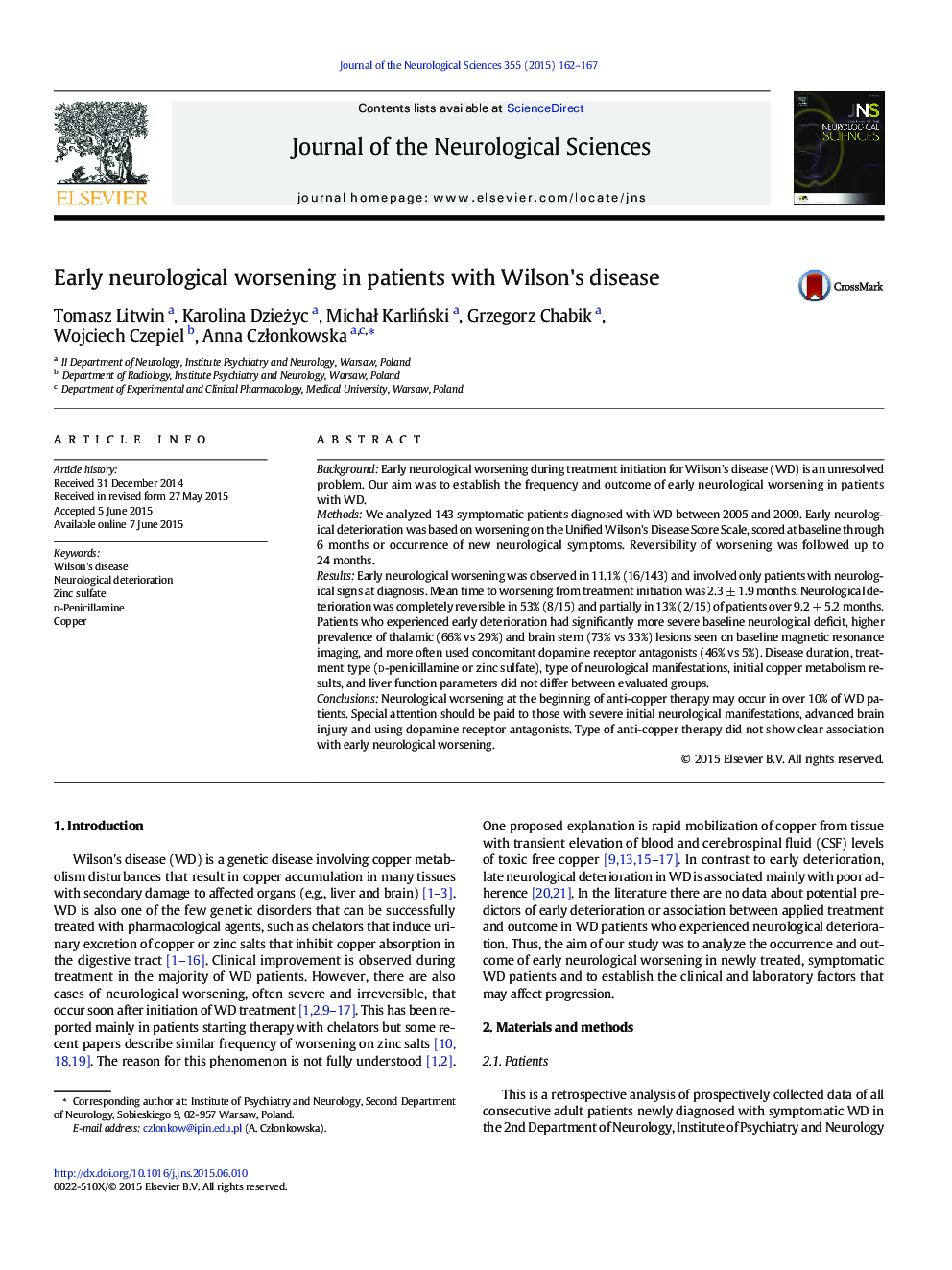| کد مقاله | کد نشریه | سال انتشار | مقاله انگلیسی | نسخه تمام متن |
|---|---|---|---|---|
| 1913317 | 1535107 | 2015 | 6 صفحه PDF | دانلود رایگان |
• Early neurological worsening is observed in almost 11% of WD patients.
• It is limited to cases with neurological signs at the beginning of WD treatment.
• It is usually reversible in most of the cases (66%).
• It may be associated with several clinical, imaging and pharmacological factors.
• The type of anti-copper therapy seems to have no clear impact.
BackgroundEarly neurological worsening during treatment initiation for Wilson's disease (WD) is an unresolved problem. Our aim was to establish the frequency and outcome of early neurological worsening in patients with WD.MethodsWe analyzed 143 symptomatic patients diagnosed with WD between 2005 and 2009. Early neurological deterioration was based on worsening on the Unified Wilson's Disease Score Scale, scored at baseline through 6 months or occurrence of new neurological symptoms. Reversibility of worsening was followed up to 24 months.ResultsEarly neurological worsening was observed in 11.1% (16/143) and involved only patients with neurological signs at diagnosis. Mean time to worsening from treatment initiation was 2.3 ± 1.9 months. Neurological deterioration was completely reversible in 53% (8/15) and partially in 13% (2/15) of patients over 9.2 ± 5.2 months. Patients who experienced early deterioration had significantly more severe baseline neurological deficit, higher prevalence of thalamic (66% vs 29%) and brain stem (73% vs 33%) lesions seen on baseline magnetic resonance imaging, and more often used concomitant dopamine receptor antagonists (46% vs 5%). Disease duration, treatment type (d-penicillamine or zinc sulfate), type of neurological manifestations, initial copper metabolism results, and liver function parameters did not differ between evaluated groups.ConclusionsNeurological worsening at the beginning of anti-copper therapy may occur in over 10% of WD patients. Special attention should be paid to those with severe initial neurological manifestations, advanced brain injury and using dopamine receptor antagonists. Type of anti-copper therapy did not show clear association with early neurological worsening.
Journal: Journal of the Neurological Sciences - Volume 355, Issues 1–2, 15 August 2015, Pages 162–167
